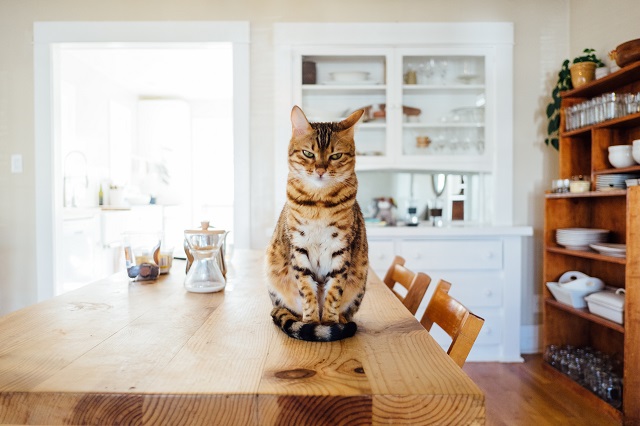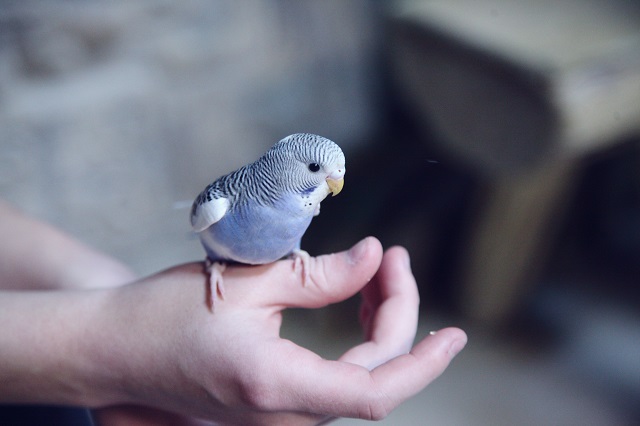
A huge 78% of pet owners have experienced difficulty in finding rented accommodation which accepts their furry friends. For many, it’s a huge obstacle and with a growing number of people having little choice but to rent well into their 30’s, the pressure on landlords to change their policies is stronger than ever.
Research shows that tenants are willing to pay hundreds of pounds extra to rent a pet friendly place to live. So why aren’t landlords answering the demand? Many are beginning to see the potential in the market, but many are still unsure about taking on the issues that can come with housing pets. CIA Landlord Insurance take a look at the pro’s and con’s…
Table of Contents
Property damage
 Destructive pets are said to cause £600 worth of damage to a property over their lifetime and this damage can reduce its value by up to 5%. It’s not difficult to see why landlords are put off by opening up their properties to pets. Untrained and badly behaved dogs are probably the ultimate culprits for this kind of problem – particularly puppies who are still learning what is right and wrong.
Destructive pets are said to cause £600 worth of damage to a property over their lifetime and this damage can reduce its value by up to 5%. It’s not difficult to see why landlords are put off by opening up their properties to pets. Untrained and badly behaved dogs are probably the ultimate culprits for this kind of problem – particularly puppies who are still learning what is right and wrong.
That being said, it differs from dog to dog and the majority of well cared for dogs with responsible owners are likely to be trained and well behaved. If they are being left alone for long periods of time though, this can trigger destructive behaviour so it’s well worth meeting the dog in its current home to assess its nature and chat to the potential tenant about their lifestyle to see if the dog will be home alone for a lot of the day.
Some landlords may encounter damage with cats as they have a tendency to scratch – but this can usually be solved with a scratching post. Aside from that, they are fairly low maintenance animals and many landlords are happy for tenants to live alongside their cats. The same goes for small pets such as rabbits, hamsters and such alike. However, if they are left to run free at any point then you’ll likely come across chewed wires and carpets so it’s best that these animals are kept caged to avoid damages.
Allergies
Allergies are on the increase worldwide and it is estimated that over 30% of the UK population suffer from allergic reactions – one of the highest allergy rates in the world. This makes pet allergies a big concern with landlords as it may cause problems with subsequent tenants and put sufferers off from renting the property. They may spend their tenancy in discomfort with an itchy nose and eyes or worse, be in danger of an asthma attack if they come into contact with animal hair.

Photo by Paul Hanaoka on Unsplash
Fur can be really difficult to get out of carpets and particularly sofas. However, it’s not impossible and if the property is adequately cleaned, vacuumed and aired between tenants then it shouldn’t be a problem. If there are stubborn traces of fur, it may be a case of getting professional cleaners in which can be quite an expense. If you’re increasing your rent and allowing pets, then that extra bit of money should cover any problem areas.
Infestation
With animals often comes fleas and mites. They are incredibly common. Fleas have been on this planet for approximately 100 million years and there are over 2000 species and subspecies that we know of. No matter how clean a pet is kept, simply a walk in the park or a sniff in the garden can result in fleas. They can even be picked up within homes having been brought in on shoes or clothing as fleas jump and attach themselves to items. They could be anywhere at anytime!
If you start with one female flea at maximum egg production, in just 60 days you could have more than 20,000 fleas in your home. The issue can very quickly escalate and get out of hand. If fleas get onto carpets, curtains, clothes and soft furnishings, they can be hard to remove and if the problem persists after washing and treating with a household flea treatment product, they may even need to be replaced.
Your tenants don’t want a flea infestation to deal with anymore than you do. Fleas are not fun for cats and dogs and can lead to problems such as hair loss, skin irritation and worse. Most responsible pet owners will give their animal regular flea treatments to avoid infestations and keep them happy and healthy.
Fouling and odours
Similarly, the majority of pets are not particularly clean. Here’s some nice facts for you – over a ten-year lifetime, a dog can produce up to half a ton of faeces and cat poo carries the Toxoplasma gondii parasite that, if it makes its way into humans, can be very dangerous and has been known to cause birth defects.
Most adult dogs are likely to be toilet trained and cats will use a litter tray, however there’s not a lot that can be done in the way of stopping birds, rabbits, ferrets or exotic pets going to the toilet whenever and wherever they fancy. It’s not just in the house that this can be a problem; cats in particular may take a liking to going to the toilet in neighbours gardens and flowerbeds which could easily result in complaints and feuds if the neighbours are keen gardeners.

Photo by Sharon McCutcheon on Unsplash
The odours left by pets can stick around for a while and cling to soft furnishings, making them unattractive to the next tenants. If urine alone soaks into wooden flooring or a carpets underlay then it’s very difficult to get rid of the smell. People who don’t have pets and aren’t used to being around animals will probably notice this smell in a property and this may put them off.
Noise
Another prominent issue with pets in properties is the noise and the complaints that neighbours may make. 41% of common issues around nuisance neighbours in the UK are loud noise related.
The main culprits here are dogs and excessive barking. Many dogs bark at a sound intensity level of between 90-100 decibels, roughly as loud as a person shouting. Again, it’s important to gage your prospective tenants lifestyle and find out whether the dog will be left alone for long periods of the day, as this is when barking can begin and become an issue. Very often, excessive barking can be managed and solved with behavioural training, however this is something your tenant will need to take on and take seriously. Plus – interviews with former burglars show that, along with CCTV, barking dogs are the best deterrent for break-ins!
Should you, or shouldn’t you?
Yes, there are a fair few issues that come with pets in the home, but there are also many solutions to these. There are an estimated 51 million pets in the UK, dogs accounting for 9 million of these. An estimated 20,000 homeless dogs a year are put down in the UK and sadly, many landlords ‘no pets’ policies contribute to this number.

Photo by Sharon McCutcheon on Unsplash
The UK’s Labour party are currently campaigning to strengthen the rights of tenants to keep a pet in their rented property. Labour’s plans call for there to be a need for evidence from a landlord that the animal in question was a nuisance in order for permission to be refused. We’re a nation that love our animals and landlords with a ‘no pets’ policy may find themselves left behind.



